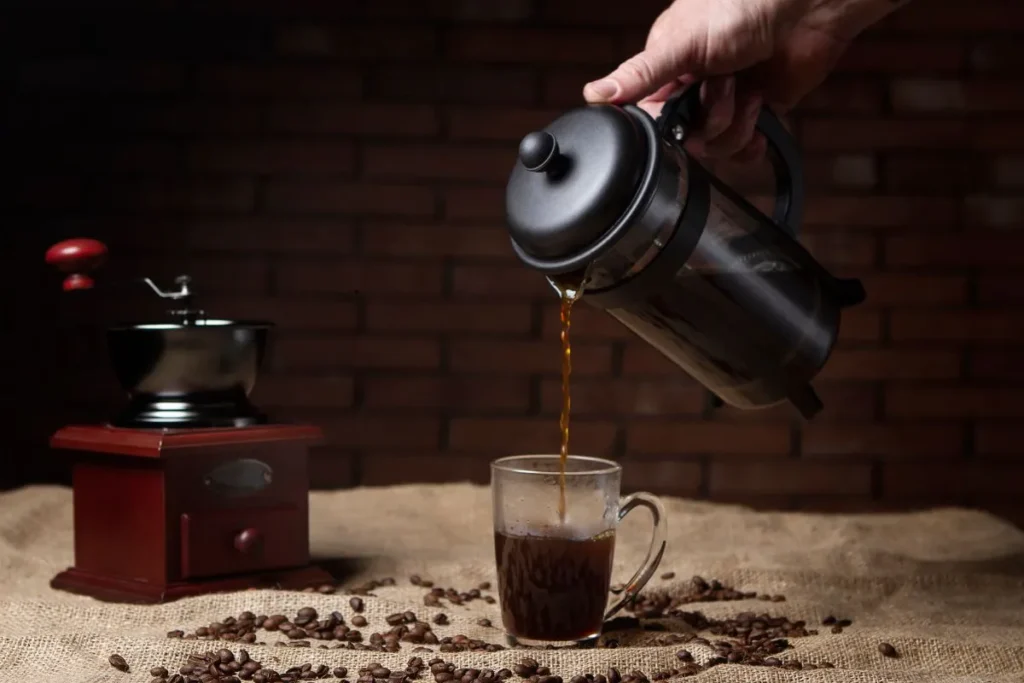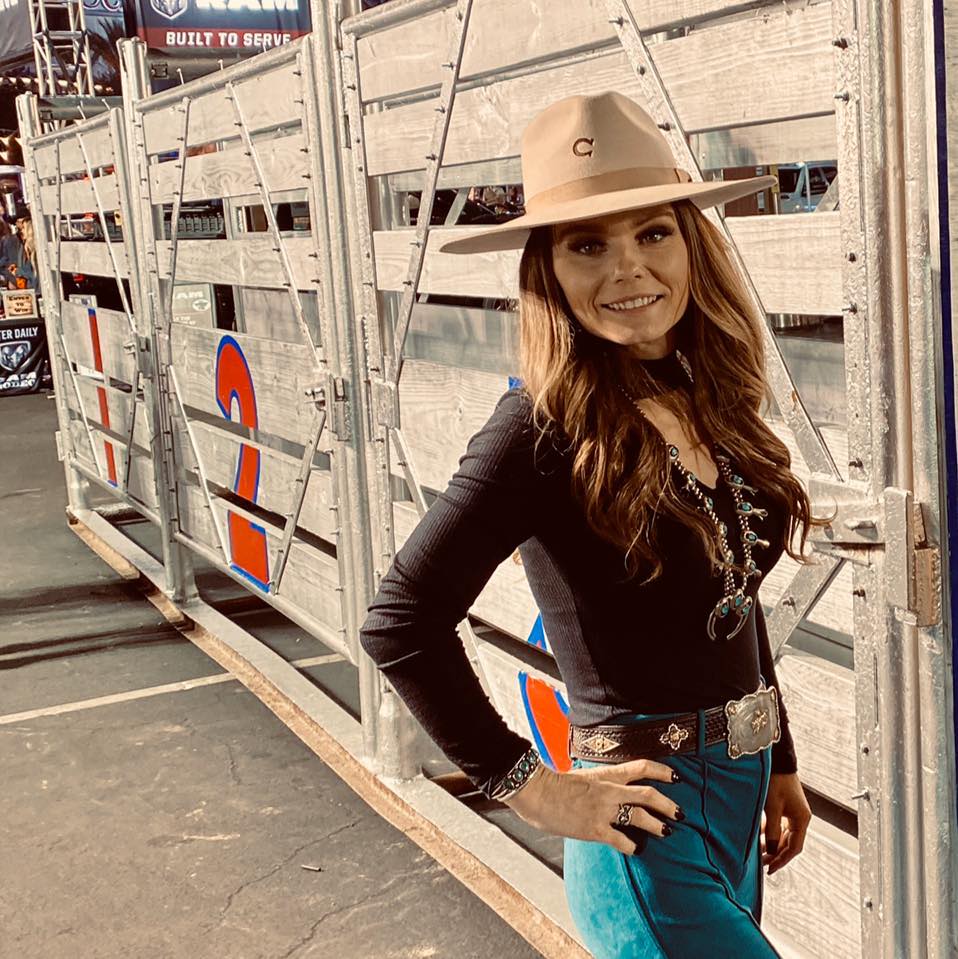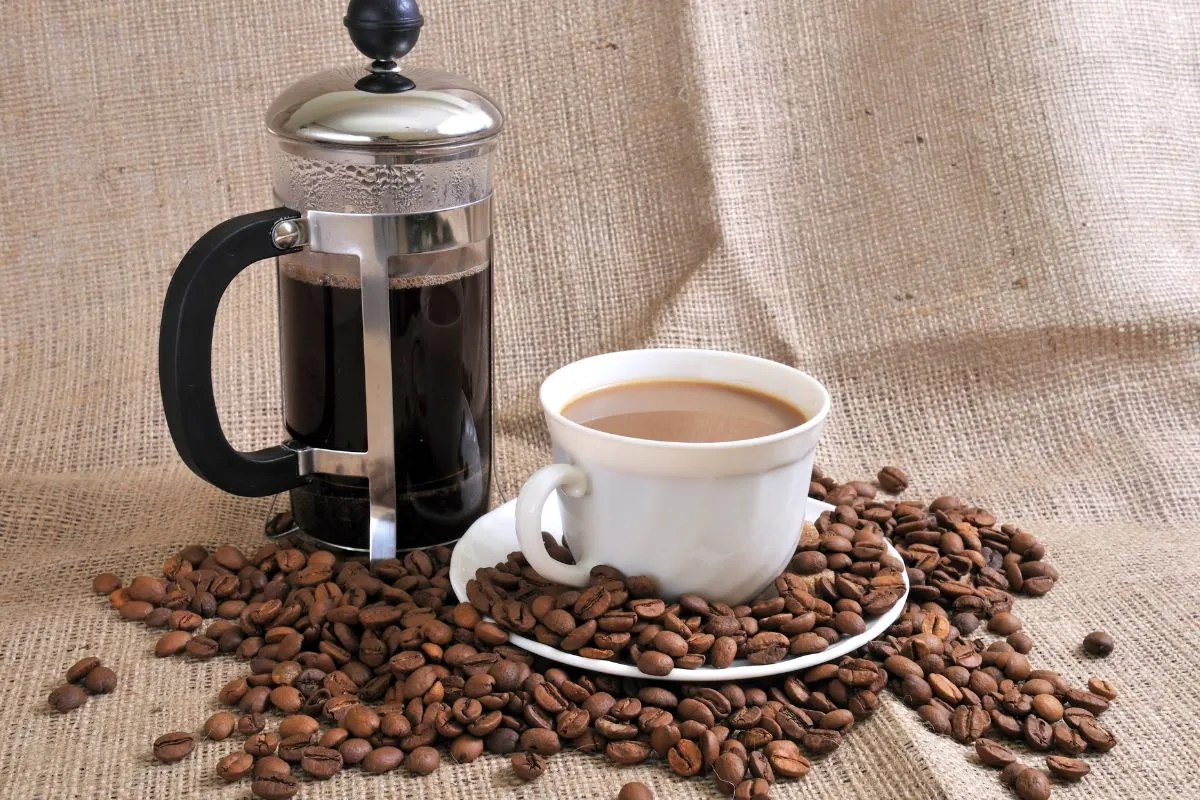Ever wondered why your French press coffee sometimes tastes weak and watery, or other times strong and bitter? The secret lies in the coffee-to-water ratio. Mastering this simple ratio is the key to brewing a consistently delicious cup with your French press. In this guide, we’ll break down the basics, share the ideal starting point, and help you find your perfect balance.
French Press Coffee Ratio: How Ratio Affects Coffee Strength and Flavor
The coffee-to-water ratio is a critical factor in determining the strength and flavor of your French press coffee. This ratio refers to the amount of coffee grounds used in relation to the amount of water added during the brewing process. Adjusting this proportion can significantly impact the final taste and intensity of your cup.
Coffee Strength
The strength of your coffee is directly influenced by the ratio of coffee grounds to water. A higher ratio (more coffee to less water) will result in a stronger, more concentrated brew, while a lower ratio (less coffee to more water) will produce a weaker, less intense cup.
For example, using a 1:10 ratio (one part coffee to ten parts water) will create a much stronger coffee than using a 1:16 ratio. The increased amount of coffee grounds relative to the water leads to a greater concentration of dissolved solids, oils, and flavors in the final brew.
Flavor Profile
The coffee-to-water ratio not only affects the strength of your French press coffee but also its overall flavor profile. Different ratios can highlight or subdue specific taste characteristics of your chosen coffee beans.
- Higher ratios (e.g., 1:10 or 1:12) tend to produce a more intense, full-bodied, and robust flavor. The increased concentration of coffee compounds can emphasize bolder, darker notes such as chocolate, nuts, or earthy tones. However, overly high ratios may lead to an overpowering or bitter taste.
- Lower ratios (e.g., 1:16 or 1:18) generally result in a lighter, more delicate, and nuanced flavor profile. The reduced concentration allows subtler notes, such as fruit, floral, or citrus tones, to shine through. Nevertheless, excessively low ratios may produce a weak, watery, or under-extracted coffee.
Finding the Perfect Balance
The ideal coffee-to-water ratio for your French press will depend on your personal taste preferences and the specific coffee beans you are using. Some general guidelines include:
- A 1:15 ratio is often considered a good starting point, providing a balanced strength and flavor.
- Adjust the ratio in small increments (e.g., 1:14 or 1:16) to fine-tune the strength and taste to your liking.
- Experiment with different ratios for various coffee origins, roast levels, and flavor profiles to discover your optimal combination.
Common Ratios Used for French Press
When brewing coffee with a French press, using the right coffee-to-water ratio is essential for achieving your desired strength and flavor profile. While the ideal ratio may vary depending on personal taste preferences and the specific coffee beans used, several common ratios serve as excellent starting points for experimentation.
1:10 Ratio (Strong)
- Coffee: 1 part (e.g., 30 grams)
- Water: 10 parts (e.g., 300 grams or 300 ml)
The 1:10 ratio produces a strong, bold, and concentrated coffee. This ratio is ideal for those who prefer a more intense and full-bodied cup, or for brewing coffee that will be mixed with milk or cream. However, this ratio may be too strong for some preferences and can lead to a bitter or overpowering taste if not brewed carefully.
1:12 Ratio (Medium-Strong)
- Coffee: 1 part (e.g., 25 grams)
- Water: 12 parts (e.g., 300 grams or 300 ml)
A 1:12 ratio strikes a balance between strength and flavor, resulting in a medium-strong brew. This ratio allows for a robust coffee while still maintaining some of the subtler notes and nuances of the beans. It is a popular choice among coffee enthusiasts who enjoy a rich, flavorful cup without overwhelming intensity.
1:15 Ratio (Medium)
- Coffee: 1 part (e.g., 20 grams)
- Water: 15 parts (e.g., 300 grams or 300 ml)
The 1:15 ratio is often considered the “golden ratio” for French press coffee, offering a well-rounded and balanced cup. This medium-strength brew showcases the unique characteristics of the coffee beans while providing a satisfying and approachable flavor profile. It is an excellent starting point for those new to French press brewing or for exploring different coffee varieties.
1:17 Ratio (Medium-Mild)
- Coffee: 1 part (e.g., 18 grams)
- Water: 17 parts (e.g., 306 grams or 306 ml)
For those who prefer a milder, less intense coffee experience, the 1:17 ratio offers a medium-mild strength. This ratio allows for a more delicate flavor profile, highlighting the subtle notes and complexities of the coffee beans. It is an excellent choice for light to medium roast coffees or for those who enjoy a gentler, more nuanced cup.
Adjusting the Ratio
While these common ratios provide a solid foundation, it is essential to remember that personal taste preferences may vary. Some coffee drinkers may find their perfect ratio falls between these guidelines, such as a 1:13 or 1:16 ratio. The key is to experiment with small adjustments to find the ideal balance of strength and flavor that suits your palate.
Additionally, factors such as coffee bean origin, roast level, grind size, and brewing time can all impact the final taste of your French press coffee. By understanding the role of the coffee-to-water ratio and how it interacts with these variables, you can fine-tune your brewing process to create a cup that perfectly matches your desires.
Ratio Cheat Sheet for Different French Press Sizes
When brewing French press coffee, it’s essential to maintain the proper coffee-to-water ratio to ensure a consistent and well-balanced cup. However, with various French press sizes available, it can be challenging to remember the exact measurements for each one. This cheat sheet provides a quick reference for the most common French press sizes and their corresponding coffee and water amounts based on popular ratios.
| French Press Size | Coffee Amount | Water Amount |
|——————-|—————|—————|
| 3 Cup (12 oz) | 18g (1:15) | 270g (9 oz) |
| | 24g (1:12) | 288g (9.6 oz) |
| | 30g (1:10) | 300g (10 oz) |
| 4 Cup (17 oz) | 26g (1:15) | 390g (13 oz) |
| | 34g (1:12) | 408g (13.6 oz)|
| | 44g (1:10) | 440g (14.7 oz)|
| 8 Cup (34 oz) | 52g (1:15) | 780g (26 oz) |
| | 68g (1:12) | 816g (27.2 oz)|
| | 88g (1:10) | 880g (29.3 oz)|
| 12 Cup (51 oz) | 78g (1:15) | 1170g (39 oz) |
| | 102g (1:12) | 1224g (40.8 oz)|
| | 132g (1:10) | 1320g (44 oz) |
To use this cheat sheet, simply find your French Press Coffee Ratio and choose the desired coffee-to-water ratio (1:15, 1:12, or 1:10). The corresponding coffee and water amounts will be listed in grams and ounces.
For example, if you have an 8-cup French press and prefer a 1:15 ratio, you would use 52 grams of coffee and 780 grams (26 ounces) of water.
Keep in mind that these measurements are based on the following standard ratios:
- 1:15 ratio (medium strength)
- 1:12 ratio (medium-strong)
- 1:10 ratio (strong)
If you prefer a different strength or have a French press size not listed here, you can easily calculate the amounts using the following formulas:
- Coffee amount = (Water amount in grams) ÷ (Desired ratio)
- Water amount = (Coffee amount in grams) × (Desired ratio)
Remember, while these ratios provide a solid starting point, feel free to adjust them slightly to suit your personal taste preferences. Factors such as coffee bean origin, roast level, and grind size can also impact the final flavor, so don’t hesitate to experiment and find your perfect balance.
With this cheat sheet and a little practice, you’ll be able to consistently brew delicious French press coffee in any size, ensuring a satisfying cup every time.
How the French Press Works

The French press, also known as a cafetière or coffee plunger, is a simple yet effective manual brewing device that has been a staple in homes and cafes worldwide for decades. Its popularity stems from its ease of use, affordability, and ability to produce a rich, full-bodied cup of coffee.
The Components
A French press consists of four main parts:
- Carafe: Usually made of glass or stainless steel, the carafe holds the coffee grounds and water during the brewing process.
- Plunger: Attached to the lid, the plunger features a metal or plastic shaft with a handle at the top and a filtering disk at the bottom.
- Filter screen: A fine metal mesh screen is attached to the filtering disk, responsible for separating the brewed coffee from the grounds.
- Lid: The lid sits on top of the carafe and has a spout for pouring the brewed coffee.
The Brewing Process
To brew coffee using a French press, follow these steps:
- Preheat the carafe by filling it with hot water, then discard the water.
- Grind your coffee beans to a coarse consistency, similar to breadcrumbs or coarse sea salt.
- Add the ground coffee to the carafe, typically using an ideal coffee to water ratio.
- Pour hot water (just below boiling point) over the grounds, ensuring even saturation.
- Stir the mixture gently to help the coffee bloom and release trapped gases.
- Place the lid and plunger on the carafe, with the plunger pulled up.
- Allow the coffee to steep for 4-6 minutes, depending on your preference.
- Slowly press the plunger down, separating the brewed coffee from the grounds.
- Serve the coffee immediately to prevent over-extraction.
The Extraction Principle
French press coffee is an immersion brewing method, meaning the coffee grounds are in direct contact with the water throughout the entire brewing process. This prolonged exposure allows for a more thorough extraction of the coffee’s oils, flavors, and soluble compounds, resulting in a robust and full-bodied cup of coffee.
However, the French press’s metal mesh filter allows some fine coffee particles and oils to pass through into the final brew, contributing to its distinct mouthfeel and flavor profile. This is in contrast to paper filter methods, which trap these particles and oils, producing a cleaner and brighter cup.
Understanding how the French press works enables coffee enthusiasts to optimize their brewing technique and enjoy a consistently delicious cup of coffee every time.
Other Factors Affecting French Press Coffee Quality
Brewing a perfect cup of French press coffee involves more than just getting the coffee-to-water ratio right. Several key factors can significantly impact the quality, flavor, and overall experience of your brew. By understanding and controlling these variables, you can consistently create a delicious and satisfying cup of coffee.
Coffee Bean Selection and Roast Level
The quality and flavor of your French press coffee largely depend on the beans you choose. Opt for freshly roasted, high-quality coffee beans from reputable sources. The roast level also plays a crucial role in determining the final taste profile:
- Light roasts tend to have a brighter, more acidic, and complex flavor profile, highlighting the unique characteristics of the coffee’s origin.
- Medium roasts offer a balanced flavor with a slightly sweeter, nuttier taste and a medium body.
- Dark roasts produce a bolder, more robust flavor with a fuller body and less acidity, often featuring notes of chocolate or caramel.
Experiment with different roast levels to find the one that best suits your taste preferences.
Grind Size and Consistency
The grind size is a critical factor in French press brewing, as it directly affects the extraction process and the final flavor of your coffee. For French press, a coarse grind is recommended to prevent over-extraction and minimize sediment in your cup.
- A grind that is too fine will lead to over-extraction, resulting in a bitter, astringent taste and a muddy, silt-like texture.
- A grind that is too coarse will cause under-extraction, producing a weak, watery, and flavorless coffee.
Aim for a grind size similar to coarse sea salt or breadcrumbs. Ensure that the grind is consistent, as uneven particles can lead to unbalanced extraction.
Water Quality and Temperature
The quality of the water used for brewing can greatly impact the taste of your French press coffee. Use clean, filtered water to avoid any unpleasant flavors or odors that may be present in tap water. Avoid using distilled or softened water, as they can lead to a flat, lifeless cup of coffee.
Water temperature is another crucial factor. For optimal extraction, the water should be heated to just below boiling point, around 195-205°F (90-96°C). If the water is too hot, it can scorch the grounds and produce a bitter taste. If it’s too cool, it may result in under-extraction and a weak, unsatisfying brew.
Brewing Time
The brewing time, or steeping time, is the duration for which the coffee grounds are in contact with the water. For French press coffee, a typical brewing time ranges from 4 to 6 minutes. However, the exact time may vary depending on factors such as the coffee beans, roast level, grind size, and personal taste preferences.
- A shorter brewing time (3-4 minutes) may be suitable for lighter roasts or if you prefer a brighter, more acidic cup.
- A longer brewing time (5-6 minutes) may be better for darker roasts or if you prefer a bolder, more full-bodied flavor.
Experiment with different brewing times to find the sweet spot that works best for your chosen beans and desired taste profile. Be sure to use a timer to ensure consistency between brews.
Conclusion
Your French press coffee doesn’t have to be ordinary. French Press Coffee Ratio By experimenting with the coffee-to-water ratio, you can unlock a world of flavor. Start with the recommended ratio, then adjust it to match your personal taste. Each brew is a chance to discover new and exciting flavors. So go ahead, grab your favorite beans, and start brewing your perfect cup!
Frequently Asked Questions
Q1. What is the best coffee-to-water ratio for French press?
The ideal coffee-to-water ratio for French press depends on personal taste preferences. A good starting point is a 1:15 ratio (1 gram of coffee per 15 grams of water), which produces a medium-strength brew. Adjust the ratio to make it stronger (1:12) or milder (1:17) based on your desired flavor profile.
Q2. How long should I steep my French press coffee?
The recommended steeping time for French press coffee is between 4 to 6 minutes. Steeping for less than 4 minutes may result in under-extraction and a weak, watery cup. Steeping for more than 6 minutes can lead to over-extraction and a bitter, astringent taste.
Q3. What grind size should I use for French press coffee?
French press coffee requires a coarse grind size, similar to the texture of coarse sea salt or breadcrumbs. A coarse grind allows for a slower, more even extraction and helps minimize sediment in the final cup. Avoid using a fine grind, as it can lead to over-extraction and a muddy, bitter taste.
Q4. Can I use pre-ground coffee for my French press?
While it’s best to use freshly ground coffee for optimal flavor, you can use pre-ground coffee in a French press. However, ensure that the pre-ground coffee has a coarse grind size suitable for French press brewing. Many pre-ground coffees are too fine and may result in over-extraction and excessive sediment.
Q5. How to measure the French press coffee to water ratio?
To measure the coffee and water accurately for the French press, it is recommended to use a scale. Measuring by weight is more accurate than measuring by volume, which can vary depending on how finely the coffee beans are ground. Measure out the desired amount of water for your French press. Use a ratio of 1:15, which means 1 gram of coffee for every 15 milliliters of water. Next, measure out the coffee beans on a scale using the recommended amount for your desired water amount, and adjust based on personal preferences.

Rossi Glover, the passionate Owner of Grand Lake Coffee, infuses every cup with her love for coffee and dedication to quality. With an extensive background in the art and science of coffee, Rossi is not just a connoisseur but a storyteller, sharing the intricate tales behind each brew.

